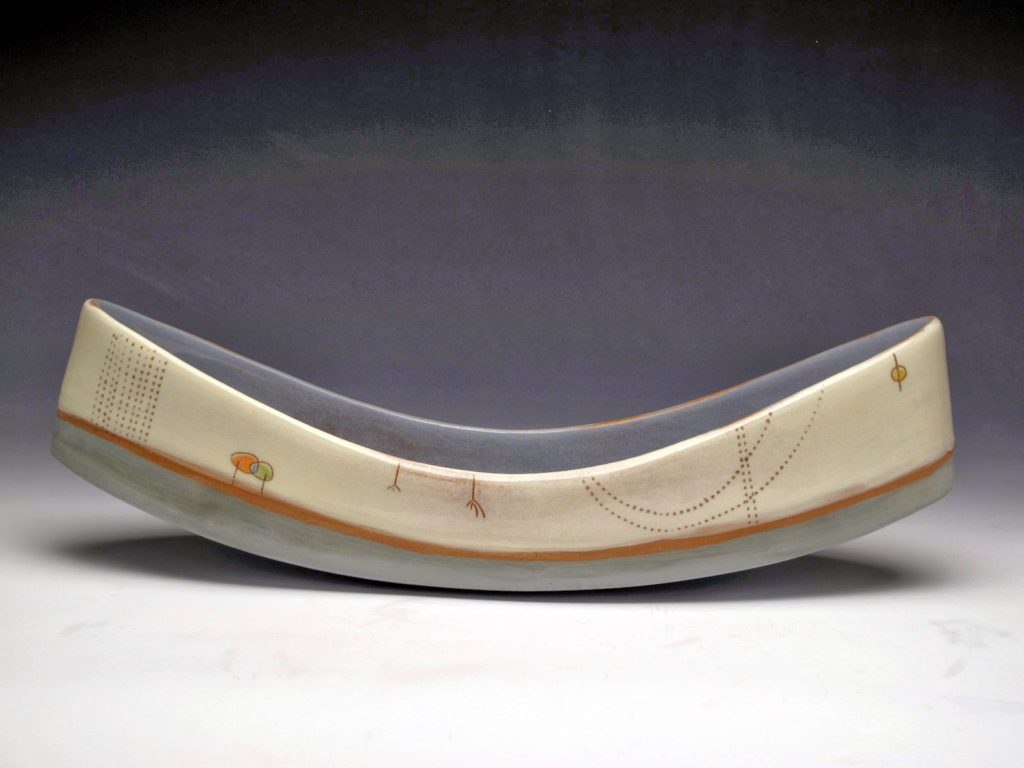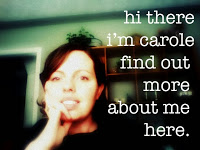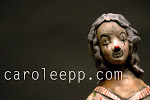by Carole Epp | Apr 2, 2014 | call for entry, emerging artist, job posting, monday morning eye candy, movie day, residency opportunity, show us your influences, technical tuesday
2014 GUEST ARTIST IN RESIDENCE PROGRAM
NORTHCOTE POTTERY SUPPLIES
MELBOURNE, AUSTRALIA
Northcote
Pottery Supplies would like to invite emerging and established ceramic
artists to apply for a three month residency in 2014. Selected artists
will be allocated a private studio space, rent free, at our Brunswick
East location. This is an opportunity for artists to develop and produce
work, experiment, tackle a new project or more….
2014 Dates
10 June – 29 August
15 September – 5 December
Applications due 28 April 2014
Aims of the Guest Artist in Residence Program
To support and encourage an emerging or established artist in their ceramics practice
To strengthen and add diversity to our Resident Artists’ Program
To offer a unique workshop and ‘meet the artist’ opportunities to our students and local community
Northcote Pottery Supplies will offer the Guest Artist in Residence
The opportunity to work in an active ceramics centre, alongside other practicing artists
3 months private studio space (3.5m x 3.4m) at Northcote Pottery Supplies, rent free
Studio space, equipped with wheel, work desk and shelving
24 hour studio access
50% discount on firing at Northcote Pottery Supplies
10% retail discount on selected materials sold at Northcote Pottery Supplies
Responsibilities of Guest Artist-in-Residence
A commitment to work regularly in the studio
To develop and run a one-day workshop in consultation with NPS staff (time volunteered)
Be available for a ‘Meet the Artist’ Day, where the public can view the Guest Artist-in-Residence at work
Present a floor talk about their work and practice
If the residency period falls on Open Day (late August) to open their studio to the public, alongside other resident artists
Donate a piece of artwork to the Northcote Pottery Supplies Collection at the conclusion of the residency period
Important Information
Applicants will be notified of the outcome early May, with shortlisted applicants invited for interview
Our Guest Artist in Residence program is for studio space only, we are unable to provide accommodation
We are not taking applications from full time students
Northcote Pottery Supplies
142-144 Weston Street
Brunswick East, VIC 3057
Australia
by Carole Epp | Apr 2, 2014 | call for entry, emerging artist, job posting, monday morning eye candy, movie day, residency opportunity, show us your influences, technical tuesday
In the mid-12th century, Korean artists introduced the technique of
using black and white inlays beneath green glaze to depict floating
clouds, cranes, and flowers on ceramics. A later, quite different
version of this practice, known as sanggam, produced lively, abstract
patterns with white pigment alone. In this talk, Dr. Pamela Vandiver,
professor of materials science and engineering at the University of
Arizona, investigates this amazing technology and its evolution at a
microscopic level. This lecture is made possible by the generous support
of the National Museum of Korea.
by Carole Epp | Apr 1, 2014 | call for entry, emerging artist, job posting, monday morning eye candy, movie day, residency opportunity, show us your influences, technical tuesday
Deadline:
COB Friday 22 August 2014
About
Stepping Up, the 2015 Australian Ceramics Triennale, is the premier event that
brings our ceramics community together. To be held in the national capital,
Canberra, an exciting and diverse program will showcase ceramics through a
series of important discourses and conversations, masterclasses and
exhibitions.
Dates
Public programs commence Monday 6 July 2015
Conference
Program Thursday 9 – Saturday 11 July 2015
General
Guidelines for Speakers
•
Speakers will deliver a presentation for ten minutes, followed by a moderated Q
and A session with conference delegates.
•
A final abstract must be prepared by each speaker and submitted to the session
chair by 1 November 2014 for inclusion on the website (300 words)
•
A completed final paper must be submitted for the printed program by 1 March
2015 Themes 1.
Stepping
Up- the Changing World Around 500BCE Heraclitus said “The only thing that is
constant is change”. Despite intermittent periods of relative stability, change
continues to be a central characteristic of life, particularly in the late 20th
and early 21st centuries. As a group of people who work with or are associated
with one of the world’s oldest art materials, how do we adapt to or, indeed,
drive change? Ceramics courses in universities (and those TAFEs that are still
running them) are being cut to save money, whilst community pottery groups are
booming, and international residency opportunities and mentorships are
increasing. So what will ceramics training and education look like in the
future? From the rapid prototyping of old (throwing on the potters’ wheel), 3-D
printing is being explored in ceramics – it is fast becoming commonplace in
other materials. What are the implications of this for studio pottery and
ceramic design? Will the seductive power of ‘new’ technology spell the end of
studio practice as we have known it, or will clay – the material of our current
creation – prove resistant to uptake? Laser and waterjet cutting have found
their niches in craft practice (including ceramics), as have many other
industrial processes; so is there a studio of the future that will engage with
all of this? By 2020, over one third of the world’s population will live in
China and India, and when the whole of Asia is counted, projections have more
than 50% of the world’s population living in this region. Australia is well
placed to be active in securing a seat on this express train, but what are we
doing about it now? How will this affect our practices, our output, our
livelihood and our understanding of ‘our’ culture?
Conversation
1- New technologies
Conversation
2- Asian Century
Conversation
3- Education
2.
Stepping Up- Your Role in the future Although there persists a romantic view of
the potter or ceramic artist working alone or in a small team – either in a
rural or urban setting, how closely does this reflect the truth? We are all
citizens of the world and, as such, have a responsibility to contribute to its
betterment and that of the ecosystems it supports. This engagement can take
many forms, and the opportunities to use the skills and understanding that we
have to useful ends are many and various. Personal concern, within our own
studios, about our impact on the environment and our own health; official aid
programs, development projects and community events, targeted at improving
health outcomes for those populations who are disadvantaged or in need of
assistance are just some of the many ways in which meaningful engagement with
the broader world can take place.
Conversation
1- Social responsibility
Conversation
2- Community
Conversation
3- Environment
3.
Stepping Up- Making Money In discussions at ceramic gatherings, the elephant in
the room is often money and economic survival. It is essential in today’s
connected world that we utilise all marketing resources available. But this can
mean much more than developing a website or printing business cards. The way in
which social media, industry collaborations, networking and fundraising have
become the norm rather than the exception in the commercial world demands that
we explore, as creatively as possible, all avenues for selling our work or our
skills. One all too often witnesses a slight sniffiness associated with the
whispered comment ‘commercial’ when people see selling exhibitions, marketing
strategies or advertising ploys that do not pretend to be otherwise. To what
extent are we selling our souls to the devil when we ‘make to sell’? What are
alternative and creative ways to develop commercial partnerships, and novel
ways to raise capital for ventures both inside and outside the studio?
Conversation
1- Marketing (social media, videos etc.)
Conversation
2- Collaborating (with industry e.g. architects, restaurants, etc)
Conversation
3- Initiating (innovative self-funding – rather than grants!)
General
Guidelines for Demonstrators
•
Demonstrations are for five hour blocks
•
• An individual may only present once during the conference
•
A final demonstration outline must be prepared by each demonstrator for
publication prior to the conference. This should describe the proposed
demonstration and if more than five hours is required. Demonstrators should
also list the equipment and materials they will require.
Please
note: Travel, accommodation and participation funds are currently not
available.
Nominating
a speaker or demonstrator You may nominate someone to be a speaker or
demonstrator. Please e-mail Mel George, Project Manager with your suggestions.
Email:
[email protected]
by Carole Epp | Mar 31, 2014 | call for entry, emerging artist, job posting, monday morning eye candy, movie day, residency opportunity, show us your influences, technical tuesday

Courtney Murphy
Artist Statement
My designs are influenced by simplified
abstractions of nature, children’s artwork, folk art, mid-century modern
objects and textiles, books, thoughts and conversations. More recently I have been looking at
pattern and interactions of color. I tend to work slowly, and I’m attracted to
clean simple forms. I pay careful
attention to line, both in my drawing, and in the profiles or outlines of the
forms themselves.
I
am intrigued by the details and imperfections found in hand-made objects, and
the ways in which these marks reflect the maker of the piece. A slight change in the profile or image
on a cup determines whether a person will be drawn to one over another. Bringing a new piece of pottery into my
home brings a small clue into the life of the maker, what they were interested
in, and perhaps what they were thinking at the time. Subtle details that you might not notice right away become
evident through the passage of time and continued daily interaction.
I
love creating functional work because of the personal connection created when
the work leaves my studio to become a part of somebody else’s routine. So many important moments in life are centered around the
table. Cooking and preparing food
can bring people together in celebration.
The presentation of food can be enhanced and complemented by a beautiful
serving piece. Handmade pots can
also play a large role in quieter times, when you share a cup of coffee or
glass of wine with a friend. When
I look in my kitchen cabinets, I am reconnected to experiences of the past few
years. Each handmade dish holds
it’s own history and connection to a particular time and place. It’s nice to have these personal
objects help preserve the memories of the places I have been and the people I
have met.

by Carole Epp | Mar 30, 2014 | call for entry, emerging artist, job posting, monday morning eye candy, movie day, residency opportunity, show us your influences, technical tuesday
The ASU Art Museum at Arizona State University invites applications
for Curator of Ceramics, according to a University job posting. Founded
in 1950, the ASU Art Museum was named “the single most impressive venue
for contemporary art in Arizona” by Art in America magazine. The ASU Art
Museum is an integral part of the ASU Herberger Institute for Design
and the Arts at Arizona State University, a Research One Institution.
The Ceramics Center, a unit of the museum, was established in 2002
and houses the museum’s extensive modern and contemporary studio
ceramics collection, considered to be the finest in the United States,
the posting states. The mission of the Center is to present, interpret
and research ceramics within the broader context of contemporary art and
then disseminate these activities for ASU students, the Phoenix
community, scholars, artists and visitors worldwide. By presenting
exhibitions, making the permanent collection accessible and by
documenting ceramic activity through its archives, the Center plays a
leadership role in inspiring an appreciation of studio ceramics while
connecting to broader communities, disciplines and ideas.
Candidates must have master’s degrees in art, art history, design or
museum studies; strong interests in the history of craft and/or design
with five years (assistant rank) or seven years (associate rank)
experience in an art museum or related field; evidence of original
research and publication in the field of contemporary ceramics and/or
craft; proven records in attracting significant development support and
funding; and proven knowledge of professional museum practices.
Applicants must send or email a letter of application, a resume with
exhibition and publication lists and the names and contact information
of three references to: Chair of Curator of Ceramics Search Committee,
ASU Art Museum, P.O. Box 872911, Tempe, Ariz. 85287-2911 or
[email protected]
The application deadline is April 7, 2014; if not filled, every two weeks thereafter until the search is closed.
via Cfile Online














